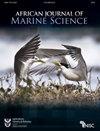When the flathead mullet left St Lucia
IF 1.4
4区 生物学
Q3 MARINE & FRESHWATER BIOLOGY
引用次数: 8
Abstract
The St Lucia estuarine system on the east coast of South Africa is a declared World Heritage Site and Ramsar Site of International Importance. A major ecological feature of St Lucia during the last century was the annual spawning migration of the flathead mullet Mugil cephalus down the system in the first half of each year. Top predators, such as the African fish eagle Haliaeetus vocifer, white pelican Pelecanus onocrotalus, Nile crocodile Crocodylus niloticus and Zambezi shark Carcharhinus leucas, have made extensive use of adult M. cephalus as a food resource. With the advent of prolonged closure of the St Lucia mouth in the first decade of the 21st century, caused by the lack of St Lucia system connectivity with the Mfolozi River and a prolonged drought, this spawning migration has ceased to exist. The almost complete disappearance of M. cephalus was reinforced in the second decade of this century by a continued lack of any estuarine–marine connectivity. This loss of connectivity between Lake St Lucia and the sea for more than 12 years is longer than the normal life cycle of M. cephalus, and the possibility exists that the putative subpopulation of this species that occupied the system prior to the turn of the century may have been rendered locally extinct. In January 2021, the berm at the mouth of the estuary was artificially breached and the outflow of St Lucia estuarine waters into the sea occurred for the first time since 2002. However, it remains to be seen whether the recovery of the M. cephalus population to pre-2000 levels will occur over the short term (year) or longer term (decade). It is strongly recommended that an adaptive management strategy, rather than a fixed management approach, be adopted for the sake of future connectivity of the St Lucia system to the marine environment.当平头鲻鱼离开圣卢西亚时
南非东海岸的圣卢西亚河口系统已被宣布为世界遗产和国际重要拉姆萨尔遗址。上个世纪,圣卢西亚的一个主要生态特征是每年上半年,平头乌鱼Mugil cephalus每年都会沿着该系统产卵迁徙。顶级掠食者,如非洲鱼鹰Haliaeetus vocifer、白鹈鹕Pelecanus onocrotalus、尼罗河鳄鱼Crocodylus niloticus和赞比西鲨鱼Carcharhinus leucas,已经广泛利用成年M.cephalus作为食物资源。由于圣卢西亚系统与Mfolozi河缺乏连通性和长期干旱,圣卢西亚河口在21世纪头十年长期关闭,这种产卵迁徙已经不复存在。在本世纪的第二个十年,由于河口-海洋连通性的持续缺乏,M.cephalus几乎完全消失。圣卢西亚湖与海洋之间的连通性丧失超过12年,这比M.cephalus的正常生命周期还要长,而且在本世纪之交之前占据该系统的该物种的假定亚群可能已经在当地灭绝。2021年1月,河口的护堤被人为破坏,圣卢西亚河口水域自2002年以来首次流入大海。然而,脑脊髓炎种群是否会在短期(一年)或长期(十年)内恢复到2000年前的水平还有待观察。强烈建议采取适应性管理战略,而不是固定的管理方法,以便圣卢西亚系统未来与海洋环境的连通性。
本文章由计算机程序翻译,如有差异,请以英文原文为准。
求助全文
约1分钟内获得全文
求助全文
来源期刊

African Journal of Marine Science
生物-海洋与淡水生物学
CiteScore
2.60
自引率
16.70%
发文量
17
审稿时长
6-12 weeks
期刊介绍:
The African (formerly South African) Journal of Marine Science provides an international forum for the publication of original scientific contributions or critical reviews, involving oceanic, shelf or estuarine waters, inclusive of oceanography, studies of organisms and their habitats, and aquaculture. Papers on the conservation and management of living resources, relevant social science and governance, or new techniques, are all welcomed, as are those that integrate different disciplines. Priority will be given to rigorous, question-driven research, rather than descriptive research. Contributions from African waters, including the Southern Ocean, are particularly encouraged, although not to the exclusion of those from elsewhere that have relevance to the African context. Submissions may take the form of a paper or a short communication. The journal aims to achieve a balanced representation of subject areas but also publishes proceedings of symposia in dedicated issues, as well as guest-edited suites on thematic topics in regular issues.
 求助内容:
求助内容: 应助结果提醒方式:
应助结果提醒方式:


